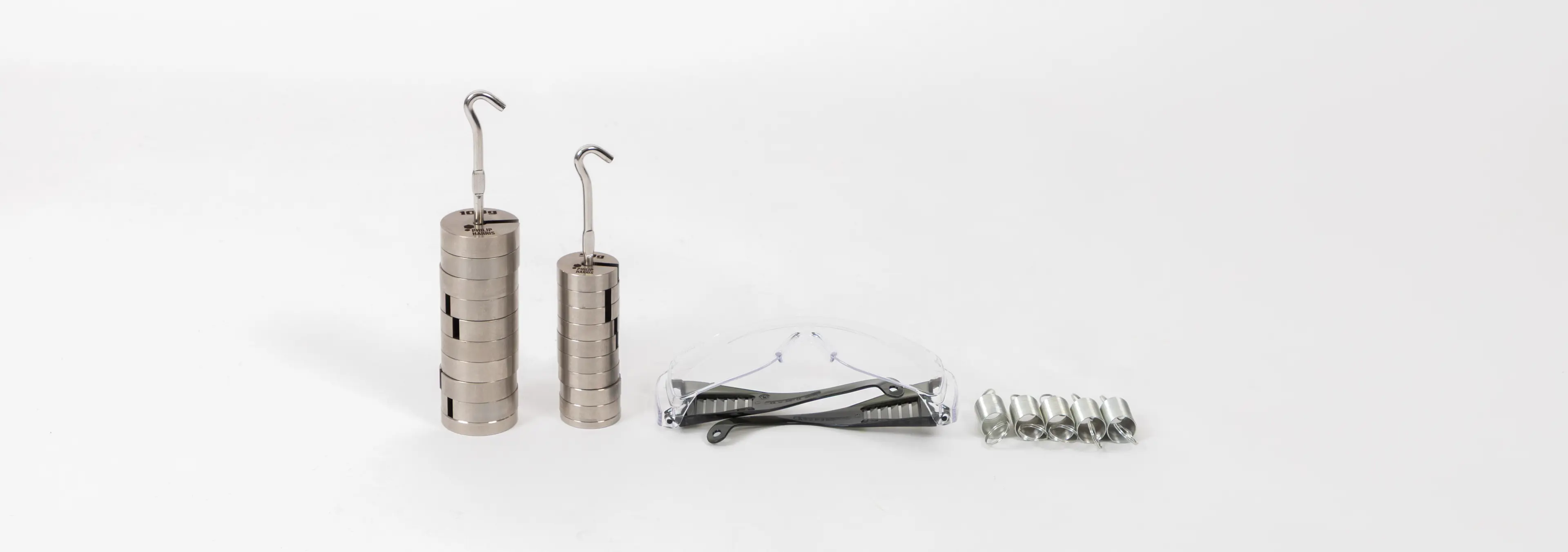
Simple harmonic systems: mass spring system - A Level Physics
An investigation into simple harmonic motion using a mass-spring.
Students must investigate simple harmonic motion. The practical links period and oscillation to mass, length, or spring constant. Students are assessed on timing methods and controlling amplitude. The investigation involves recording periods in a table for different masses or lengths and plotting graphs to compare results with theory.
Subject: Physics | Level: A Level |
You will need:
Method
Preparation and setup
Hang the spring from a clamp and attach the 100 g mass hanger.
Position the Blu-Tack and pin at the bottom of the mass as a reference point. This will represent the centre of the subsequent oscillations.

Conducting the experiment
Pull the mass hanger vertically downwards a few centimetres and release. The spring should oscillate vertically up and down.
Determine the time period of the mass-spring system by timing 10 complete oscillations.
Take repeat readings of the time for 10 oscillations, T10. Use the values of T10 to find the time period for one oscillation, T.
Add a 100 g mass to the mass hanger and repeat the timing process to enable the time period of the oscillations to be found.
Repeat the experiment
Repeat the experiment with a range of different masses, m, and for each mass determine the corresponding time period, T.
Calculations and Analysis
Plot a graph of T2 on the y-axis against m.
A straight line through the origin will confirm the relationship between T and m predicted by SHM theory ie T2= 4π2m / k where k is the spring constant or stiffness of the spring.
The gradient of the graph can be used to determine k.
T2 = 4πm / k hence k= 4π2 / gradient
Estimate the uncertainty in T and m. Hence find the uncertainty in k.
Technician tips
For accurate results it is important the pendulum oscillates with small amplitude and in a straight line.
Expendable springs (with k approximately 25 Nm–1) are suitable for this experiment, together with a range of slotted masses from 0–800 g.



